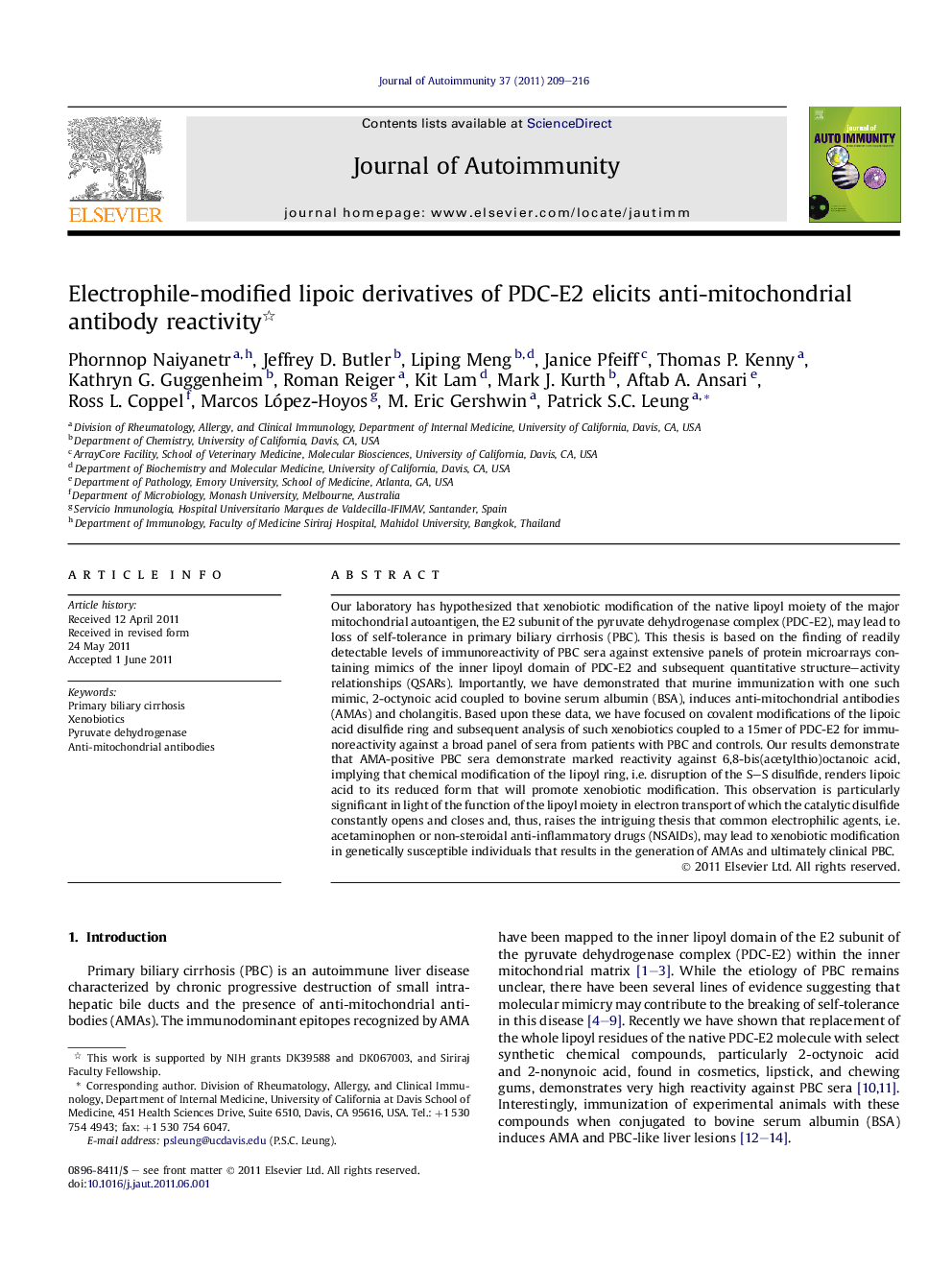| Article ID | Journal | Published Year | Pages | File Type |
|---|---|---|---|---|
| 3368012 | Journal of Autoimmunity | 2011 | 8 Pages |
Our laboratory has hypothesized that xenobiotic modification of the native lipoyl moiety of the major mitochondrial autoantigen, the E2 subunit of the pyruvate dehydrogenase complex (PDC-E2), may lead to loss of self-tolerance in primary biliary cirrhosis (PBC). This thesis is based on the finding of readily detectable levels of immunoreactivity of PBC sera against extensive panels of protein microarrays containing mimics of the inner lipoyl domain of PDC-E2 and subsequent quantitative structure–activity relationships (QSARs). Importantly, we have demonstrated that murine immunization with one such mimic, 2-octynoic acid coupled to bovine serum albumin (BSA), induces anti-mitochondrial antibodies (AMAs) and cholangitis. Based upon these data, we have focused on covalent modifications of the lipoic acid disulfide ring and subsequent analysis of such xenobiotics coupled to a 15mer of PDC-E2 for immunoreactivity against a broad panel of sera from patients with PBC and controls. Our results demonstrate that AMA-positive PBC sera demonstrate marked reactivity against 6,8-bis(acetylthio)octanoic acid, implying that chemical modification of the lipoyl ring, i.e. disruption of the S–S disulfide, renders lipoic acid to its reduced form that will promote xenobiotic modification. This observation is particularly significant in light of the function of the lipoyl moiety in electron transport of which the catalytic disulfide constantly opens and closes and, thus, raises the intriguing thesis that common electrophilic agents, i.e. acetaminophen or non-steroidal anti-inflammatory drugs (NSAIDs), may lead to xenobiotic modification in genetically susceptible individuals that results in the generation of AMAs and ultimately clinical PBC.
► Ig reactivity to lipoyl mimics on PDC-E2 peptide is studied by microarray and QSAR. ► IgG & IgM of AMA + PBC but not controls recognized modified S–S bond of lipoic acid. ► The PDC-E2 lipoic acid S–S bond is prone to modification by electrophilic agents. ► Xenobiotic reduction of PDC-E2 lipoic acid could break tolerance to PDC-E2. ► Common electrophiles may initiate AMAs and PBC in genetically susceptible individuals.
